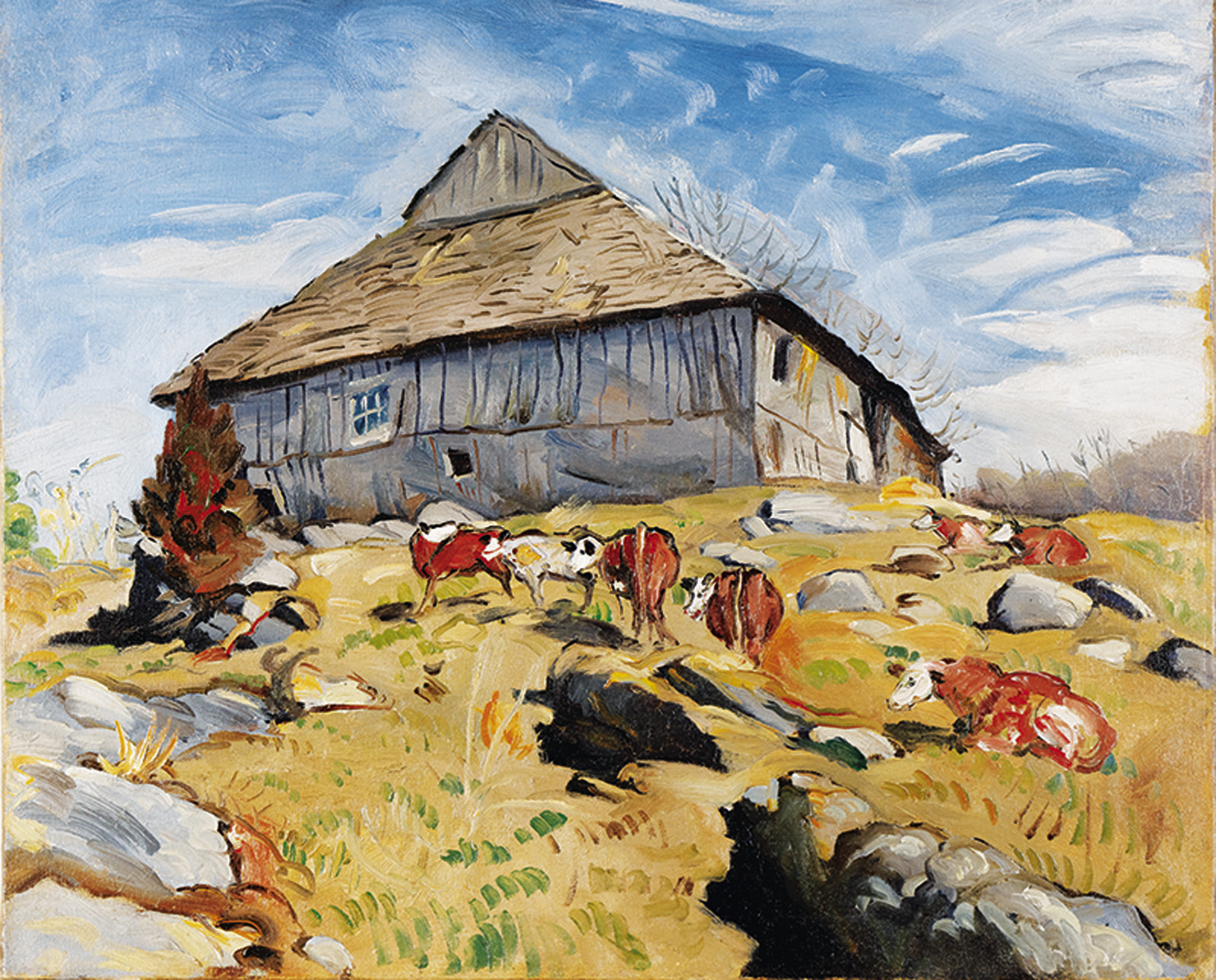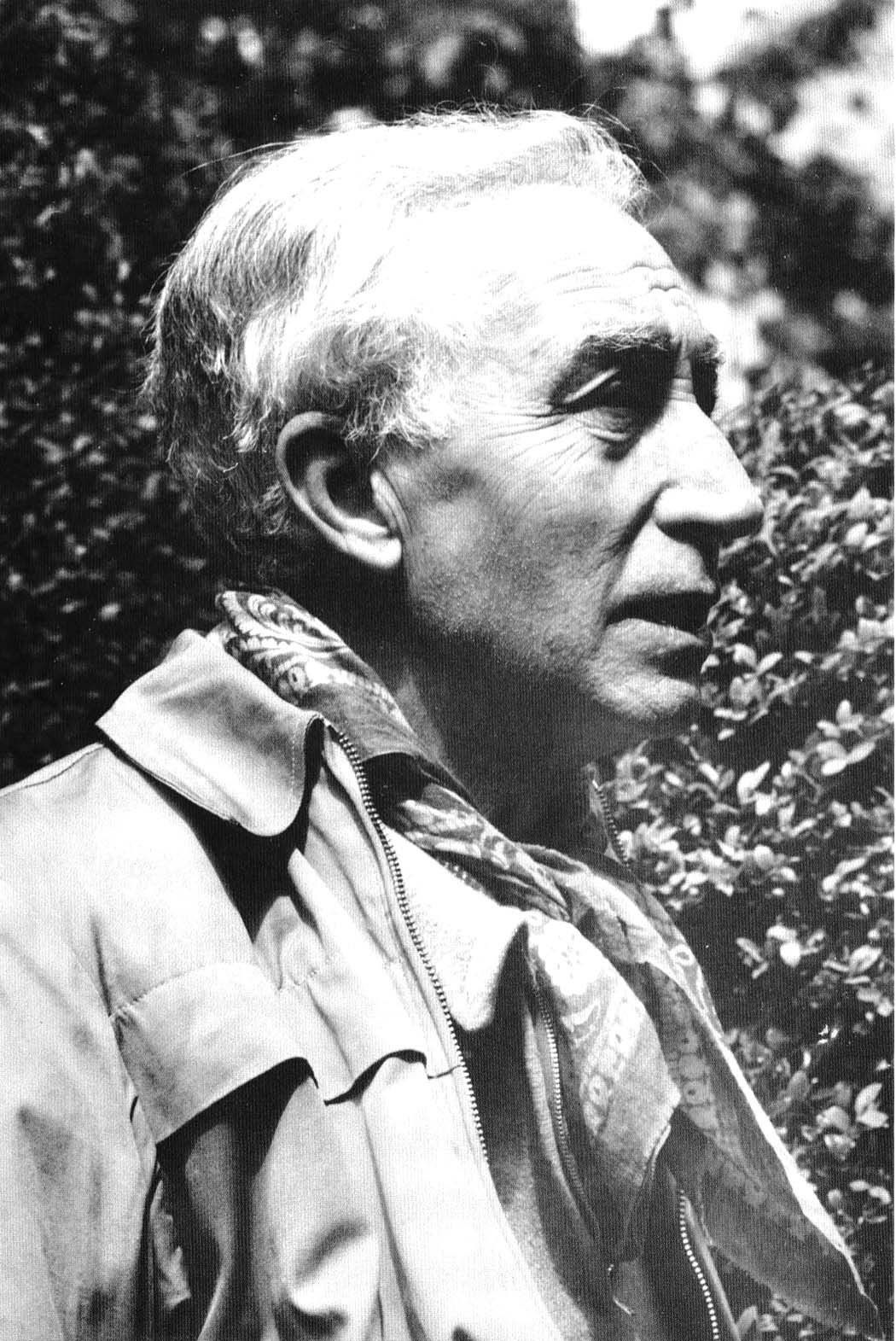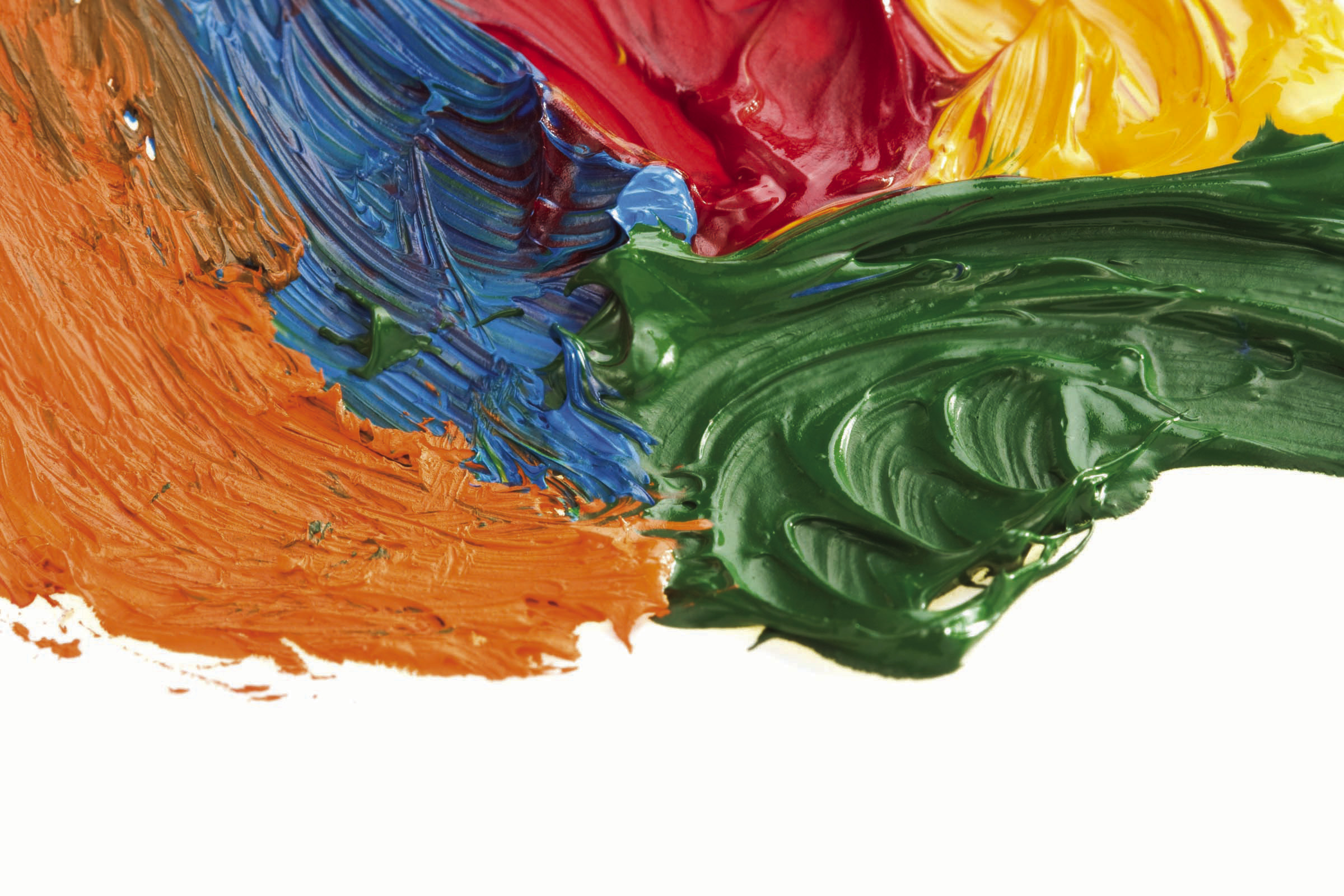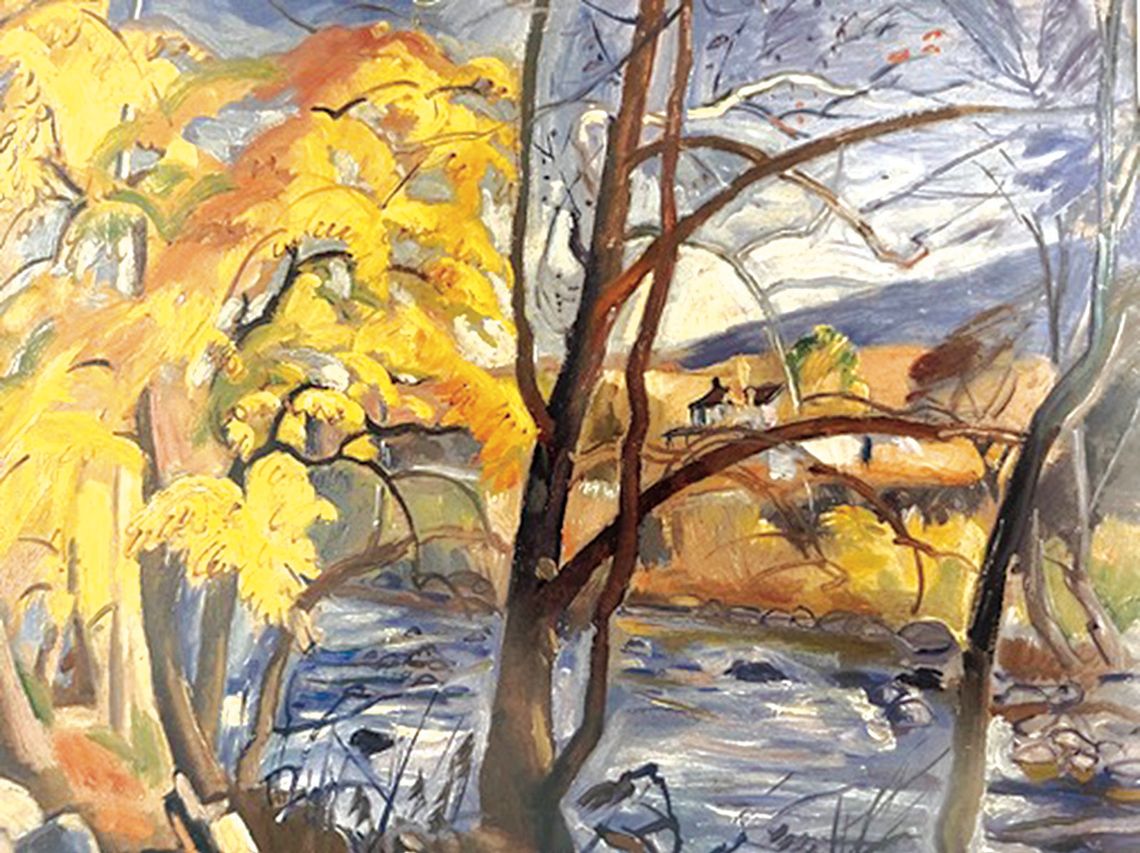introduced to Daura




introduced to Daura. They became engaged in February 1928 and were married in December.
In 1930, the Dauras left Paris for a quieter life in the country, settling in the medieval French village of St.Cirq-Lapopie, near Cahors. He was enchanted by its terra cotta-roofed houses clustered around the towering church overlooking the Lot River. One of the oldest houses in the village — built in the 13th century — was for sale, and the Dauras bought it. Their daughter and only child, Martha, was born there that year, and the family lived in St.-Cirq-Lapopie for nearly a decade.
After the move to St.-Cirq, Daura’s art changed, becoming more forceful and free in his use of color. St.-Cirq’s houses, streets, cliffs and inhabitants became his primary subjects, and he frequently painted the village church. Many Rockbridge residents today own Daura’s paintings from his St.-Cirq period.
Daura made his first trip to the U.S. in 1934–35 to visit Louise’s relatives. As a wedding present, her mother had given the couple property that included an old ice house, a cabin and the warm springs in Rockbridge Baths, and the young family stayed there for a year. Daura began painting western Virginia landscapes.
After World War II broke out, the Dauras established permanent residence in Virginia, becoming U.S. citizens in 1943. The family settled into the cottage at the Baths, living there from 1939 to 1942. In 1942 they became caretakers at the historic Rockbridge property Tuckaway for Col. Albert Tucker, who had been recalled into active duty, and they lived there until 1945.
The rolling landscapes of Virginia provided unending inspiration for Pierre. The family continued to vacation in St.-Cirq in summers, and sometimes even longer, but they never again lived there full time.
In the summer of 1945, the Dauras moved to Lynchburg, so Daura could earn enough money to send Martha to college. Daura taught at Lynchburg College and gave private lessons. From 1946 to 1953, he taught at Randolph-Macon Woman’s College, now Randolph College. There Daura often painted portraits of other college employees. Some of these portraits caused controversy because the college administration disapproved of his using Black people as models (for instance, Good Henry).
During the war the future modern artist Cy Twombly (1928–2011), who lived in Lexington, came to Daura for lessons. Twombly later recalled that it wasn’t so much Daura’s lessons and critiques from which he benefited; hearing Daura talk about art opened a whole world of modern painting.
Daura combined his teaching with exhibitions, and his first solo show in the U.S. opened at the Lynchburg Art Gallery on Dec. 7, 1941, Pearl Harbor Day. In the 1950s he began to explore a new form: sculpture. He worked in wood, stone, metal and even tried paper pulp.
The Virginia landscape impressed Daura: “grandiose as nothing I have ever known.” His landscape paintings depict simple rural tasks as well as moods of the changing seasons and country scenes. He saw these motifs every day, and he painted them repeatedly. Daura saw his landscape paintings as “an important contribution to help people discover the beauty of their land ... to inspire men with a love for their native soil ...” He painted hundreds of landscapes, some in oils but more in watercolor or tempera, which he preferred for plein air painting because the materials were less cumbersome.
He wrote that his time in Rockbridge County “produced the impression of a very wild, nearly savage country ... Yet in some places, when I came to forget that I was in America, in Virginia, I couldn’t help but think of some places in France, in St. Cirq ...”
His reflective character is evident in his pensive, sensitive studies of people. A favorite Daura portrait of mine is “Martha at Thirteen,” painted in 1943–44, when the family was living at Tuckaway. Martha recalls she didn’t want to sit for this portrait, but her mother bribed her to do so by promising to read “Ivanhoe” by Walter Scott to her.
Daura painted 135 self-portraits (he was, after all, a readily available model), which beautifully document his face from young adulthood, aging through the Spanish Civil War and into old age.
In 1959 the couple built their contemporary home and studio in Rockbridge Baths. Daura continued to exhibit in the region. In 1967, his works were shown at Virginia Military Institute with those of another local painter, Marion Junkin.
Ten years after they moved to their home in the Baths, Hurricane Camille caused the creek that ran past the Daura home to flood, damaging art that had been organized in piles on the floor in preparation for three gallery shows. Cabinets of his letters and other documents were also destroyed. Neighbors woke the couple as the flooding began and helped to move some of his art upstairs to safety. But a lifetime of work — oils, woodcarvings, and a collection of more than 200 watercolors dating from 1939 — was ruined.
Instead of relying on commercial galleries, Daura sold his art from his home or at exhibitions. At one of his first shows in this area, at Washington and Lee in January 1961, Faye Lowry, a young faculty wife, purchased an oil painting of a local family. Shortly after the exhibition, the Lowrys paid a visit to the Dauras, and Pierre asked where they lived. It turned out that in the 1930s he had painted their farm, about six miles from the Daura home, and Daura gave them a watercolor of it.
Later in his life, Pierre said: “All I have ever wanted to do is find a way to paint ... I have given myself to my art. That is what I have wanted since my very early age ... to be an artist ... that is what I am.”
Pierre and Louise Daura lived in Rockbridge Baths for the rest of their lives. Louise died Nov. 10, 1972, and Pierre died on New Year’s Day, 1976. Both are buried at the Bethesda Presbyterian Church cemetery in Rockbridge Baths.
Daughter Martha Randolph Daura, with her late husband, Tom Mapp, has promoted the rediscovery of her parents’ work through gifts to more than 30 museums and public spaces in Europe and the United States. This includes a collection of more than 600 paintings, prints, drawings, sculptures and archival materials to establish the Daura Center at the Georgia Museum of Art, the largest repository of Daura art. Locally, the University of Lynchburg holds many of his works; the Taubman Museum in Roanoke has held several exhibits of his work and shows selections from Daura paintings it owns in a small permanent gallery.
The Dauras are unheralded local treasures of Rockbridge County. They lived a quiet, unassuming life, and I believe we are all richer for having had them in our midst.




